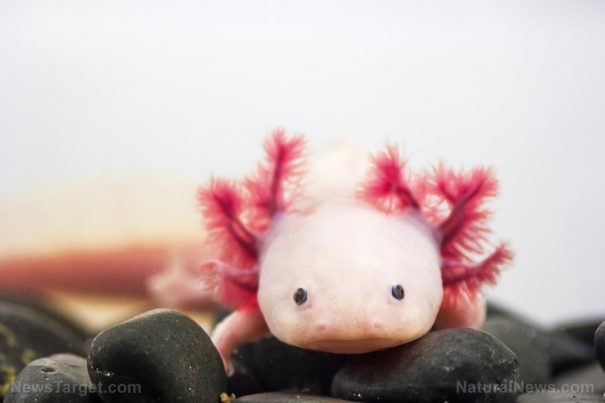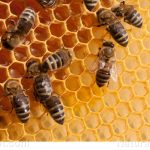
Research reveals: Humans have a “salamander-like regenerative capacity” to regrow cartilage in joints
Thursday, October 22, 2020 by Michael Alexander
http://www.naturalnewsresearch.com/2020-10-22-humans-have-salamander-like-regenerative-capacity.html

According to a recent study by Duke University scientists, humans possess an uncanny ability to regrow cartilage in their joints, much like salamanders, which are known for their remarkable ability to recover from damage to their body.
This process, according to a paper published in Science Advances, is linked to the presence of certain molecules in the body that encourage the growth of new proteins in the connective tissue. The researchers said that this finding could be used to develop new treatments for osteoarthritis, a painful and debilitating condition that affects the joints.
“We believe that an understanding of this salamander-like regenerative capacity in humans, and the critically missing components of this regulatory circuit, could provide the foundation for new approaches to repair joint tissues,” said senior author Virginia Kraus, a professor from the departments of Medicine, Pathology and Orthopedic Surgery at Duke University Medical Center.
Humans can regenerate their own cartilage
This “hidden” ability was discovered by Duke postdoctoral associate Ming-Feng Hsueh and his research team. They did so after using mass spectrometry on 18 joint tissue specimens from the hips, knees or ankles of patients who underwent surgery on these joints. What they found was that the proteins from the ankles were younger than those from the knees and hips, showing very few signs of the natural aging that occurs in the body.
The research team speculates that this might explain why the hips and knees are more susceptible to arthritis than the ankles, and why their injuries take longer to heal.
According to Hsueh, the mechanism by which humans repair tissue around the ankles, knees and hips bears some similarities to the mechanism that certain animals, such as salamanders, use to grow new legs in that the process happens more easily at the body’s extremities and not the core.
The protein readings, the research team said, also matched up with a further study of microRNA levels. They noted that these molecules are more active in self-healing animals like salamanders, lizards and zebrafish. (Related: Cool science: Researchers have successfully observed how fish and amphibians regenerate tissue into their perfect original shape.)
The team said that microRNA is also found in humans. They represent an evolutionary artifact that provides humans with the capability for joint tissue repair.
According to the research team, microRNA activity varies significantly by its location: It was highest in ankles compared to knees and hips and higher in the top layer of cartilage compared to deeper layers of cartilage.
“We were excited to learn that the regulators of regeneration in the salamander limb appear to also be the controllers of joint tissue repair in the human limb,” Hsueh said. He dubbed the ability the human body’s “inner salamander capacity.”
Kraus agreed, noting that figuring out how to boost microRNA could lead to medical advancements such as ways to regenerate damaged cartilage and even entire human limbs.
“If we can figure out what regulators we are missing compared with salamanders, we might even be able to add the missing components back and develop a way someday to regenerate part or all of an injured human limb,” Kraus said, adding that this repair mechanism could be applied to many tissues aside from cartilage.
Sources include:
Tagged Under: Tags: biology, breakthrough, discoveries, goodhealth, goodmedicine, goodscience, healing, health science, microRNA, real science, regeneration, research, tissue repair
RECENT ARTICLES


“Eco-friendly” glitter just as damaging to the environment as conventional glitter, study finds

Research reveals: Humans have a “salamander-like regenerative capacity” to regrow cartilage in joints

Human evolution occurred in ecosystems vastly different than those found today, suggest researchers

Two pesticides approved for agricultural use in the US can harm bees, warn researchers
COPYRIGHT © 2017 NATURAL NEWS RESEARCH


